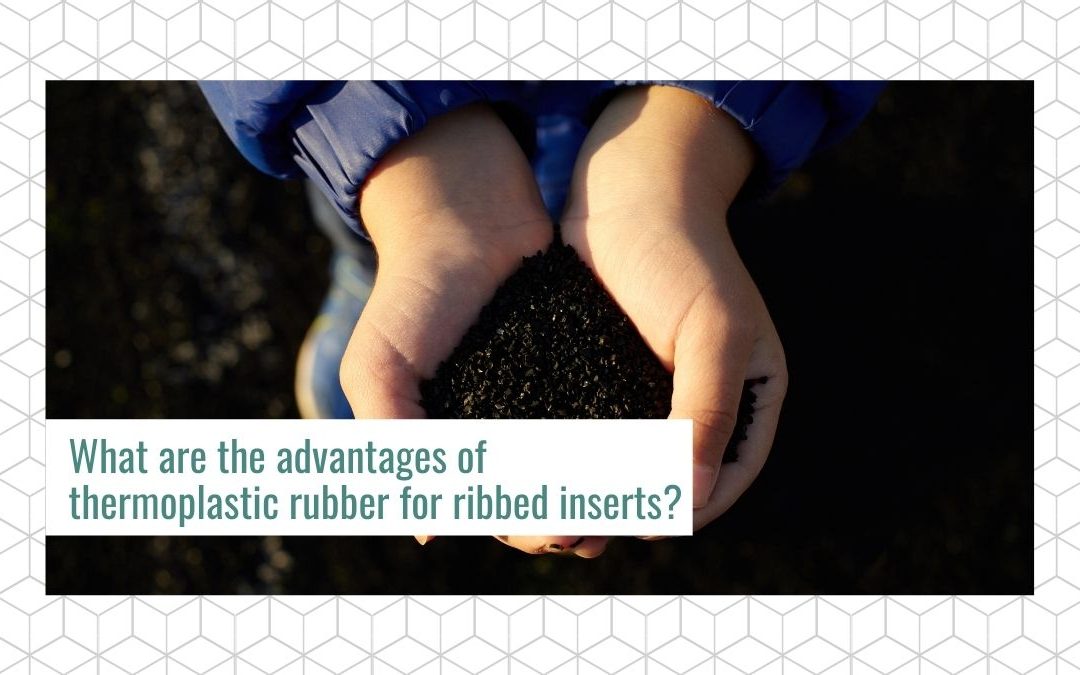Ribbed inserts are items found on many furniture that we use every day, but rarely notice. These small pieces of thermoplastic rubber are used as finishes for tubular furniture legs, canes or any type of tubular element that requires sealing one end.
Ribbed inserts are fundamental elements in the structure of the furniture, whether they are chairs with steel tube legs or hollow profile legs. It is thanks to these small elements that a chair can function properly. Without them, the chair would lose an important part of its comfort. Additionally, ribbed inserts for items such as canes and walking aids allow them to properly perform their important function of assisting movement.
So, although they are parts that go unnoticed most of the time, they are present in many aspects of daily life and are of utmost importance for the proper functioning of elements that are essential for the mobility of many people.
How are the ribbed inserts made?
The first step in the manufacture of a ribbed insert is the part design process. At FORTAPS we design them depending on the type of tube with which they will have to work and according to the function they perform.
Later we proceed to the choice of the materials with which the ribbed inserts will be printed. This is also conditional on the type of function that is planned for the ribbed insert once printed. For example, for chairs that will rest on carpets, harder and more resistant materials are used so that they do not sink. It should be noted that thermoplastic rubber is one of the favourite materials for the manufacture of ribbed inserts due to its non-slip properties.
The creation of molds and injection of the same with the favourite material is the last step of the production process of the ribbed inserts. The molds, in general, are manufactured with special characteristics according to each company.
What is thermoplastic rubber?
Thermoplastic elastomers, also called thermoplastic rubbers, rubber, caucho or flexible PVC, are a type of material generally originated from the physical mixture between a plastic and a rubber. This particular blend results in a material with both thermoplastic and elastomeric characteristics. Thermoplastic rubbers, unlike thermosets, are easier to use in the manufacture of parts such as ribbed inserts in injection molding processes. These combine the characteristic advantages of both rubber and plastic materials.
Due to the degree of interlinking of its structures, this type of material has a high degree of elasticity that makes it very useful in the manufacture of pieces such as ribbed inserts.
What advantages does the manufacture of ribbed inserts offer?
- Thermoplastic rubbers are recyclable because they can be reused after being transformed.
- They have elastic properties typical of rubbers.
- It is not necessary to add additives before processing, since as in plastics, in general, the manufacturer has already added the additives in their manufacture, and it is only necessary to add the colorants.
- They can be easily coloured with the usual pigments.
- They consume less energy than thermoset elastomers in their transformation.
- The quality control of the finished product is easier.
Besides ribbed inserts, what can be done with thermoplastic rubber?
The use of thermoplastic rubbers is widespread due to their multiple applications. Its so varied uses are given by its versatile mechanical properties: mainly its residual deformation and its elastic recovery, in addition to its resistance to temperature. They also have various applications in construction, for the manufacture of insulated window profiles, expansion joints, weather protection profiles, among other elements. In industry it is used to manufacture anti-vibration parts, anti-slip parts, cable protectors, soft washers, connectors, etc.
As we have seen, thermoplastic rubber is an extremely useful material with many applications. One of them is for the manufacture of the ribbed inserts. Undoubtedly, it is a very versatile raw material, which has characteristics that make it a great allied of the industry.





